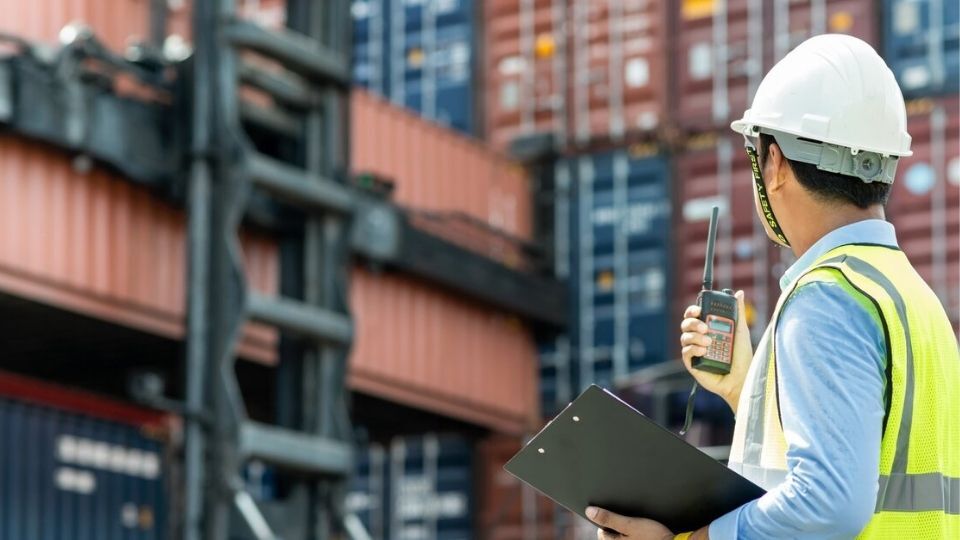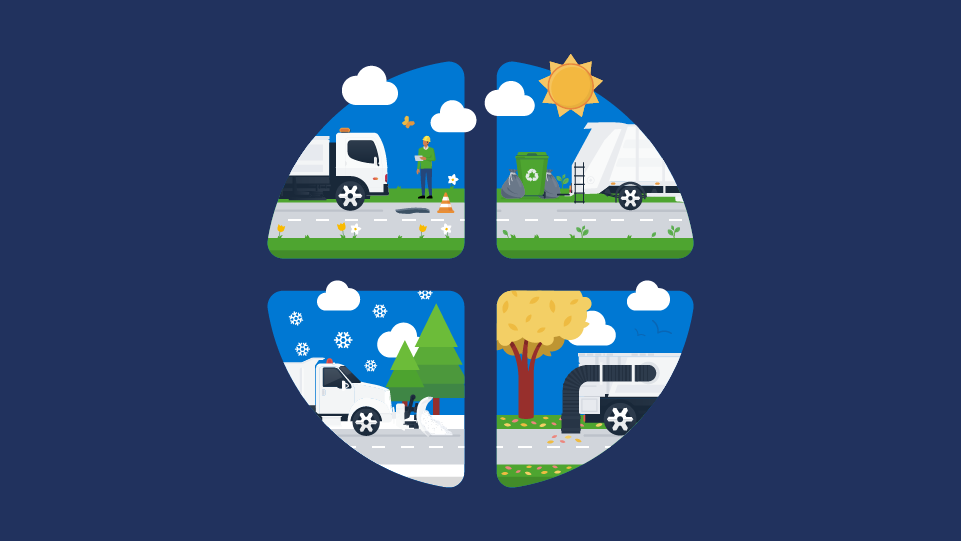Using tracking for cost management in off-road applications
Off-road fleets have unique data management needs which can be monitored using telematics.
By Geotab Team
Jan 16, 2025

Data management can be a huge stumbling block for many off-road fleets.There are various steps involved in capturing, structuring, transforming and maintaining access to valid and reliable information. Fleets with off-road assets are challenged enough with managing the fleet itself, let alone managing its data. But managing this data properly can help manage the costs as well.
Off-road fleets need to track data just like over-the-road fleets, but may require different data tracking parameters. Let’s look at some examples.
Construction
A construction company needs to know how many hours its equipment is running in order to optimize equipment utilization at each worksite. Construction fleets need to understand:
- Is too much equipment on site?
- Is there not enough equipment on site?
- Is one machine doing too much work compared to others?
- Is a machine sitting idle too long?
For example, if a fleet has three backhoes on one job site and two of them are being utilized four hours a day, but the third is only being utilized two hours a week, then there is too much equipment at this job site. The third backhoe should be moved to a different site where it can be better utilized. Being able to collect and interpret this type of data can go a long way toward better management of operating costs.
Oil and gas mining
Similar to a construction fleet, off-road fleets involved in oil, gas and mining may have equipment that they move from one site to another. These fleets will want to track how much time a vehicle is at a particular site so they can bill hours of usage to that particular well site. This will allow them to keep track of how much revenue they are generating at each site.
OEM
Aerial equipment manufacturers, generator and compressor manufacturers and other smaller manufacturers may not have proprietary telematics solutions. Geotab will work with these OEMs to install telematics on their equipment during the manufacturing process, so they can provide a factory-installed option.
Rental
Rental fleets need to be able to track equipment so they can charge their clients appropriately for the amount of use the equipment sees during the rental period.
In the past, rental contracts were written for a day of service, which is typically eight hours. However, the renter may have used the vehicle for 12 hours, so the rental company had to issue an over-bill for the additional use or they lost the extra hours of billing.
Equipment tracking through telematics will enable a rental fleet to track operation, and bill the rental client for the actual hours the equipment was used.
Measurement common to all off-road fleets
While different types of off-road fleets will monitor items specific to their industries, there are some measurements they may share. Here are some areas that all off-road fleets may wish to track.
Logistics — Having a complete view of where equipment assets are along with the trucks that move them allows for the most efficient way of scheduling their pick-ups and deliveries. This gives the dispatchers/service manager the ability to see their on-road technicians on the same map for scheduling maintenance/repair calls. It also helps avoid the delays caused by looking for equipment on large sites, helping cut down on downtime on the call at hand as well as those that follow.
Utilization — Being able to monitor the usage of equipment on site allows for the proper allocation of assets to each job based on work being done. With proper utilization data, you can properly disperse your fleet to make sure usage is more even across all assets.
Asset allocation — This allows the company as a whole to see what assets they need and base their purchasing budget on actual and accurate usage data.
Maintenance and repair schedules — Companies already have maintenance programs, but telematics can populate them with data from the equipment. This saves time and effort of manual data entry and ensures the accuracy of the data being used in the maintenance program.
Theft — By tracking a machine’s location, using geofencing and getting alerts when a device is crippled, fleets can keep track of where their assets are and if they are moving without consent.
Fuel consumption — Monitor idling and machine usage to determine how to save fuel.
Insurance premiums — Insurance companies can in some cases give discounts to customers taking advantage of telematics.
Job estimates — With the data to support exactly how much equipment is used, a fleet can more accurately bid for jobs. Construction, like a lot of industries, uses per-hour figures to create job quotes. Knowing the usage will allow them to properly estimate the job and not overbid, so that more jobs are won.
Operating expenses — Knowing how much equipment is used, transported and maintained allows companies to adjust their budgets accordingly and cut fuel and other costs.
Productivity — Improving logistics, utilization and maintenance will boost productivity.
Learn more about Geotab asset tracking solutions
Selecting a telematics device for off-road applications
Telematics can help an off-road fleet not only collect, but also analyze data through equipment tracking. Using telematics for off-road vehicles can increase fleet efficiency, reduce operating costs, increase driver safety, and make it easier to track and manage assets.
Choosing the right device for off-road vehicles is imperative for accurate data collection. Rough conditions on job sites require a different type of telematics unit, one that is protected against moisture, dirt and impact such as the Geotab GO RUGGED device.
GO RUGGED for off-road
GO RUGGED is an advanced, ruggedized telematics device designed for harsh conditions or external installation. Ideal for use in construction and engineering, agriculture, utilities, and oil and gas mining. The IP67-rated GO RUGGED telematics device allows users to access critical data insights and business intelligence for increased uptime and efficiency, enhances driver and fleet safety, and reduces fuel and maintenance costs.
It can be installed into the equipment’s engine diagnostic port (if one exists), or by using a three wire to power, ignition and ground. For best results, the GO RUGGED device should be fastened securely and mounted in a location with minimal obstruction of view to the sky.
Combining data is essential for proper analysis and drawing insights. GO RUGGED, paired with the MyGeotab software, can help off-road fleets manage their data and assets by viewing them all in one interface. Geotab’s off-road solution allows a fleet to bring in different types of apps that will allow them to customize the data gathered and viewed.
Geotab offers its device and platform separately, and can also incorporate API feeds from OEMs, so fleets can put together the telematics package that will best suit their needs. The Geotab Marketplace provides many add-ins for your solution.
To learn more about off-road telematics options, visit the Geotab off-road information page.
Subscribe to get industry tips and insights
The Geotab Team write about company news.
Table of Contents
Subscribe to get industry tips and insights
Related posts
.jpg)
Go beyond reactive truck maintenance with predictive solutions that drive profits
December 8, 2025
3 minute read

The $4B Crisis: Video Intelligence as the Answer to Fleet Distraction
December 2, 2025
3 minute read

The True Cost of Cargo Theft: When Customer Trust is on the Line
November 24, 2025
2 minute read

Telematics device cost: Key factors that determine pricing
November 19, 2025
5 minute read

Law enforcement technology: Four trends to know for 2026
November 7, 2025
6 minute read

Four seasons of fleet intelligence with Geotab's Public Works solution
November 7, 2025
2 minute read